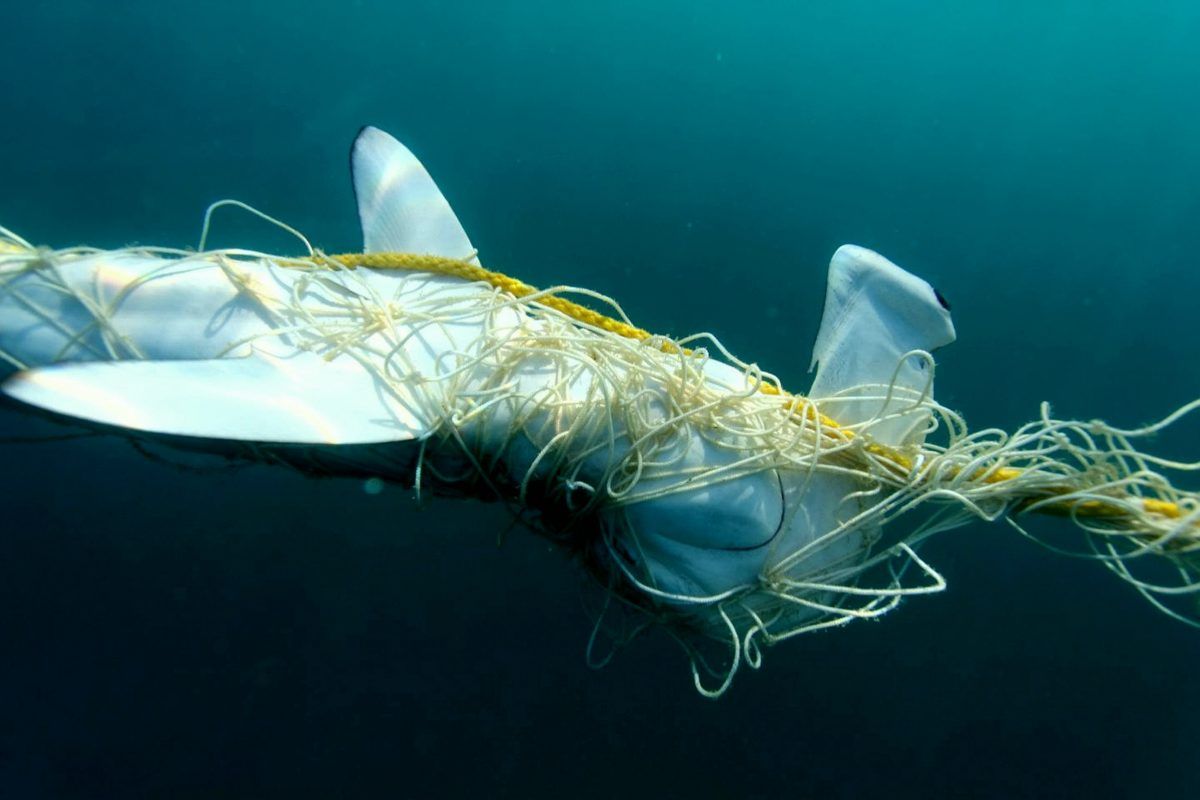
Sharks are disappearing from the Great Barrier Reef due to the expansion of nets to protect bathers, according to a new study.
The seas off Australia were once teeming with sharks, but researchers found that numbers are continuing a 50-year decline.
The Queensland coastlines stretches some 4,000 miles and is home to the Great Barrier Reef.
But since 1962 a programme of baited drumlines and nets have been rolled out and now spans more than 1,000 miles.
Dr George Roff, of the University of Queensland, said: “Explorers in the 19th Century once described Australian coastlines as being ‘chock-full of sharks’ – yet we don’t have a clear idea of how many sharks there used to be on Queensland beaches.
“Shark populations around the world have declined substantially in recent decades, with many species being listed as vulnerable and endangered.
“Throughout the 20th Century, increasing human-shark interactions in coastal ecosystems lead to the public perception that sharks are dangerous to people,
resulting in near extirpation of some coastal shark species through hunting.
“Despite widespread evidence for historical exploitation of coastal sharks, historical baselines for population sizes are largely unknown.
“The absence of baselines is particularly problematic for conservation of endangered and threatened shark populations, and the extent to which targeting shark populations reduces interaction rates with humans in coastal ecosystems is contentious.
“Here we report on long-term changes in shark catches from the Queensland Shark Control Programme (QSCP) adjacent to the Great Barrier Reef World Heritage Area.
“The QSCP has been operating since 1962 using a system of mesh nets and baited drumlines with an aim to ‘minimise the threat of shark attack on humans’ by reducing the local populations of large sharks to minimise the probability of encounters between sharks and swimmers.”
The team examined the number of sharks caught by the programme grouped into five broad categories; hammerhead sharks consisting of 23 per cent of total catch; tiger sharks (26 per cent); whaler sharks (45 per cent); white sharks (two per cent), and other sharks (four per cent).
It found as the programme was rolled out numbers caught plummeted suggesting populations were being wiped out.
Dr Roff said: “What we found is that large apex sharks such as hammerheads, tigers and white sharks, have declined by 74 to 92 per cent along Queensland’s coast.
“And the chance of zero catch – catching no sharks at any given beach per year – has increased by as much as seven-fold.
“The average size of sharks has also declined – tiger sharks and hammerhead sharks are getting smaller.
“We will never know the exact numbers of sharks in our oceans more than half a century ago, but the data points to radical changes in our coastal ecosystems since the 1960s.
“The data acts as a window into the past, revealing what was natural on our beaches, and provides important context for how we manage sharks.
“What may appear to be increases in shark numbers is in reality a fraction of past baselines, and the long-term trend shows ongoing declines.
“While often perceived as a danger to the public, sharks play important ecological roles in coastal ecosystems.
“Large apex sharks are able to prey on larger animals such as turtles, dolphins and dugongs, and their widespread movement patterns along the coastline connects coral reefs, seagrass beds and coastal ecosystems.
“Such losses of apex sharks is likely to have changed the structure of coastal food webs over the past half century.”
The findings were published in the journal Communications Biology.
By Tony Whitfield